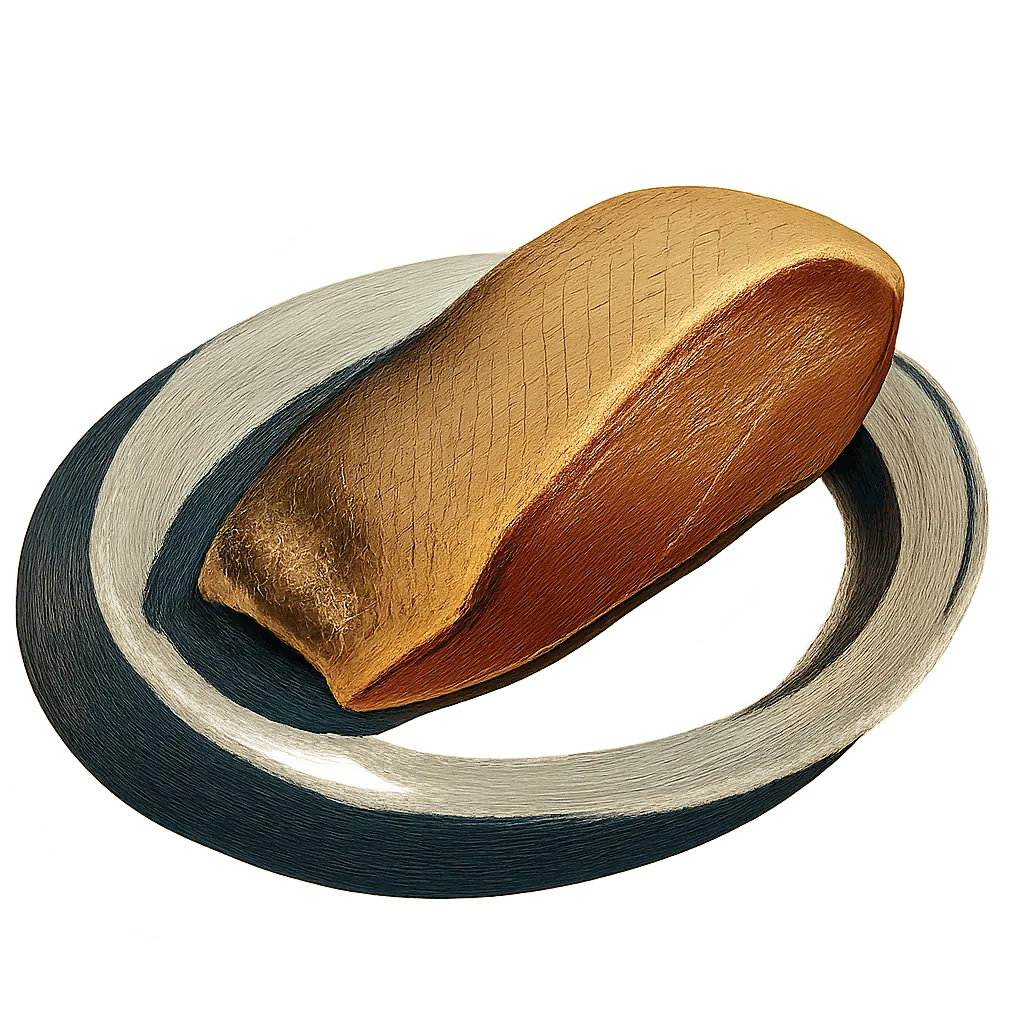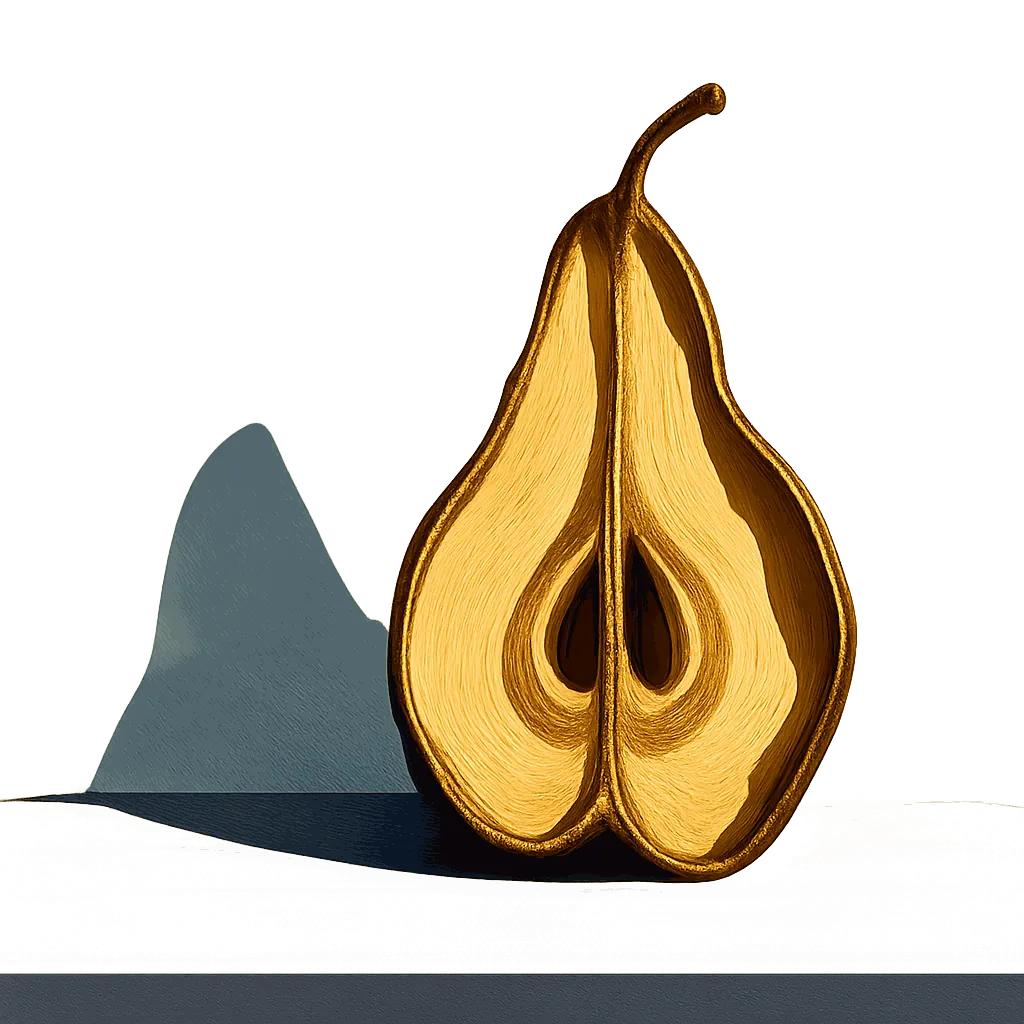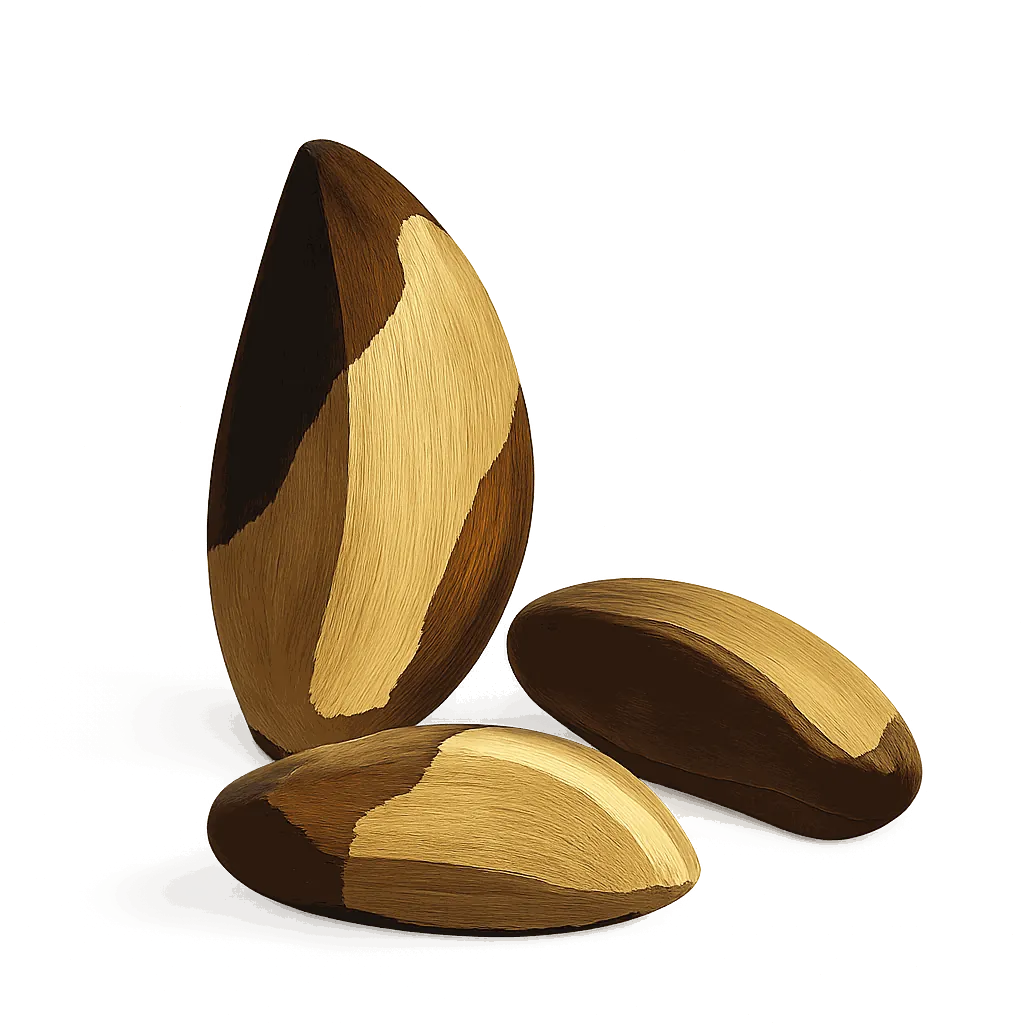Perfect Pairings & Recipes for
Duck Breast

Top flavour pairings and duck breast recipes, revealed through the hidden methmatics of flavour.
Duck breast instantly conjures the embrace of glutamate and the kiss of iron, woven with delicate hints of caramel, game, and protease, giving it remarkable depth. The key to a beautiful synergy lies in knowing how these notes harmonise and interact.
To map these harmonies, we analysed thousands of ingredients, breaking each one down across 150 flavour dimensions, identifying which notes complement and contrast. Our exploration reveals, for instance, how the fresh, cooling eucalyptol in herbes de Provence can awaken duck breast, and how bay leaf's laurelled notes forge a beautiful synergy with its savoury richness.
Flavour Profile Of Duck Breast Across 150 Dimensions Of Flavour
Flavour wheel chart showing the dominant flavour notes of Duck breast: Glutamic, Caramel, Iron, Proteolytic, Gamey, Buttery, Coffee, Adipose, Lactic, Copper, Charred, Oleic, Hazelnut, Leather, Oxidized, Tobacco, Toasted, Poultry
An ingredient's flavour profile is determined by its core characteristics (e.g. maillard, carnal, and earthy) enhanced by layers of subtle aroma notes (outer bars). When pairing ingredients, aim for a mix of core traits to build balance, and select complementary aroma notes to create harmony.
The Secret Language of Flavour
To understand exactly which flavours harmonise, we compiled a database of over 50,000 ingredient pairings commonly used in cooking. We then analysed these pairings, identifying the specific flavour notes that frequently appear together.
The Flavours That Harmonise With Glutamic Notes
Strength of Association Between Flavours
The flavours most associated with glutamic notes are: Bay leaf, Thyme, Basil, Leafy, Sage, Grassy, Rosemary, Starch, Capsicum, Capsaicin, Mustard, Wheat, Brassica, Oaky, Cucumber.
Our analysis reveals a strong connection between glutamate and bay leaf flavours. Since duck breast has a distinct glutamic flavour, try pairing it with bay leaf flavours.
The recipes below provide inspiration for pairing duck breast with bay leaf.
Harmonious Flavours Of Duck Breast
Just as our analysis revealed that glutamate and bay leaf flavour notes combine harmoniously, we can identify the full profile of flavours that harmonise with each of the flavour notes present in duck breast. E.g. the caramel flavours of duck breast are often used with cabbagy and peppery notes.
The notes linked to the various aroma notes of duck breast can be seen highlighted in the pink bars below.
Flavour Profile Of Duck Breast And Its Complementary Flavour Notes
Flavour wheel chart showing the dominant flavour notes of Duck breast: Glutamic, Caramel, Iron, Proteolytic, Gamey, Buttery, Coffee, Adipose, Lactic, Copper, Charred, Oleic, Hazelnut, Leather, Oxidized, Tobacco, Toasted, Poultry
Matching Flavour Profiles
The flavour profile of herbes de Provence offers many of the aroma notes complementary to duck breast, including rosemary and thyme aromas. Because the flavour profile of herbes de Provence has many of the of the features that are complementary to duck breast, they are likely to pair very well together.
Prominent Flavour Notes Of Herbes De Provence Are Represented By Longer Bars
Flavour wheel chart showing the dominant flavour notes of Herbes de Provence: Rosemary, Resinous, Thyme, Lavender, Pine, Sage, Bay leaf, Eucalyptol, Basil, Camphor, Poivre, Balsam, Chamomile, Chlorophyll, Astringent, Gentian
The chart above shows the unique profile of herbes de Provence across 150 dimensions of flavour, while the recipes below offer inspiration for bringing these flavours together with duck breast.
Recipes That Pair Duck Breast With Herbes De Provence
Linked Flavour Notes
Looking at the accents that are most strongly associated with the various flavours of duck breast, we can identify other ingredients that are likely to pair well.
Duck Breast's Harmonious Flavours And Complementary Ingredients
Duck breast's Strongest Flavours
Complementary Flavours
Ingredients with Complementary Flavours
Flavour groups:
Nectarous
Acidic
Floral
Herbal
Spice
Earthy
Carnal
The left side of the chart above highlights the aroma notes of duck breast, along with the complementary aromas associated with each note. While the right side shows some of the ingredients that share many of the aroma accents complementary to duck breast.
What To Drink With Duck Breast
The violet notes in côtes du rhône make it a perfect pairing with duck breast. Likewise, the violet flavours in margaux (bordeaux) create a match made in heaven. Explore a variety of ingredients below that beautifully complement the unique character of duck breast below.
Which Fruit Go With Duck Breast?
Choose fruit that anchor its tanginess or lift its metallic character. Blackberry and plum jam offer vibrant, clean counterpoints, their verdant freshness lifting the palate. Blood orange add a gentle, oniony brightness, while blueberry introduces a sophisticated, anise-tinged elegance.
Alternatively, embrace fruit that harmonise with duck breast's fattiness. The addition of peach, with its subtle saccharine notes, can complement the animal fat beautifully, while red grape lends a clean sweetness.
How Flavonomics Works
We've pioneered a unique, data-driven approach to decode the intricate art of flavour pairing. Our goal is to move beyond intuition and uncover the science of why certain ingredients harmonise beautifully. This rigorous methodology allows us to provide you with insightful and reliable pairing recommendations.
Our analysis begins with over 50,000 carefully selected recipes from acclaimed chefs like Galton Blackiston, Marcello Tully, and Pierre Lambinon. This premium dataset ensures our model distils genuine culinary excellence and creativity.
Each ingredient from these recipes is deconstructed across 150 distinct flavour dimensions, creating a unique numerical "flavour fingerprint." This quantification allows us to apply advanced analytical methods to identify complex patterns between flavour notes.
We identify popular ingredient combinations that frequently appear in our recipe database. Regression analysis is then performed on these pairings to statistically validate and pinpoint truly harmonious flavours.
These insights drive our predictive model, which allows us to take any ingredient (e.g., Duck breast), analyse its detailed flavour profile, and accurately reveal its complementary flavours and perfect ingredient partners.
Explore More
Discover more ingredient profiles and expand your culinary knowledge. Each ingredient page offers detailed analysis of flavour profiles, pairing insights, and culinary applications.
The content on our analysis blog is semi-automated. All of the words were manually written by a human, but the content is updated dynamically based on the data.


